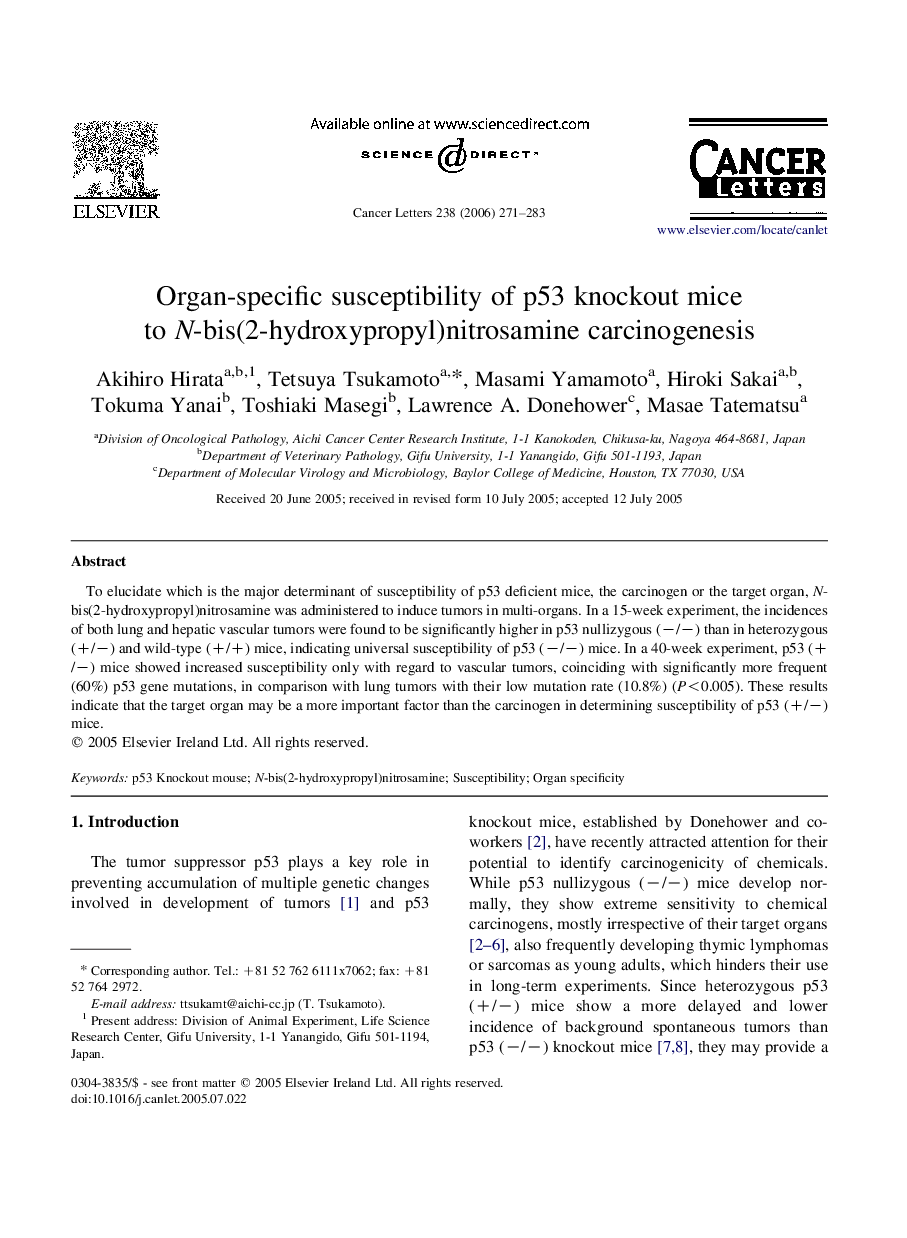| Article ID | Journal | Published Year | Pages | File Type |
|---|---|---|---|---|
| 2115961 | Cancer Letters | 2006 | 13 Pages |
Abstract
To elucidate which is the major determinant of susceptibility of p53 deficient mice, the carcinogen or the target organ, N-bis(2-hydroxypropyl)nitrosamine was administered to induce tumors in multi-organs. In a 15-week experiment, the incidences of both lung and hepatic vascular tumors were found to be significantly higher in p53 nullizygous (â/â) than in heterozygous (+/â) and wild-type (+/+) mice, indicating universal susceptibility of p53 (â/â) mice. In a 40-week experiment, p53 (+/â) mice showed increased susceptibility only with regard to vascular tumors, coinciding with significantly more frequent (60%) p53 gene mutations, in comparison with lung tumors with their low mutation rate (10.8%) (P<0.005). These results indicate that the target organ may be a more important factor than the carcinogen in determining susceptibility of p53 (+/â) mice.
Related Topics
Life Sciences
Biochemistry, Genetics and Molecular Biology
Cancer Research
Authors
Akihiro Hirata, Tetsuya Tsukamoto, Masami Yamamoto, Hiroki Sakai, Tokuma Yanai, Toshiaki Masegi, Lawrence A. Donehower, Masae Tatematsu,
